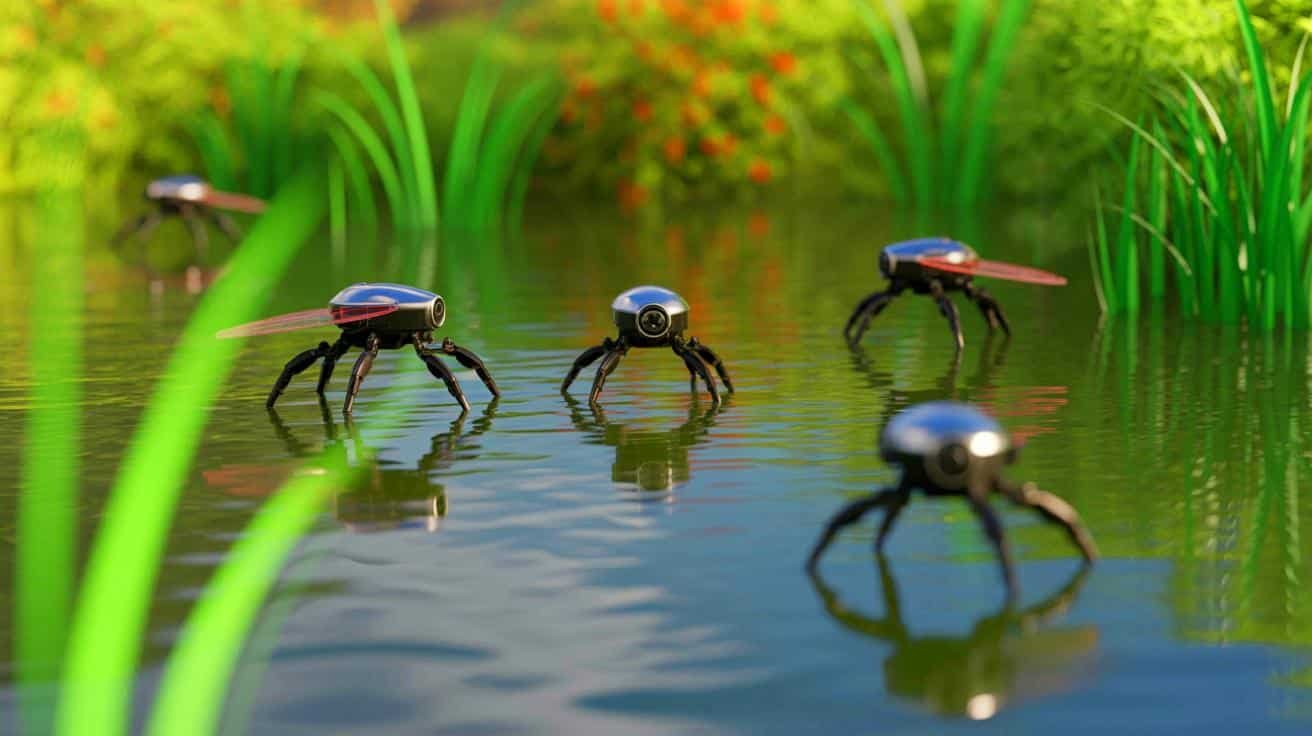Insect-Inspired Robots Walk on Water, Revolutionizing Disaster Response

▼ Summary
– Researchers at the University of Virginia have developed water-walking robots inspired by aquatic insects like water striders.
– The HydroSpread fabrication technique allows ultrathin polymer films to form directly on water, eliminating fragile transfer steps.
– Prototypes HydroFlexor and HydroBuckler mimic insect movements and demonstrate controlled motion powered by infrared heating.
– This technology could revolutionize environmental monitoring and disaster response with fleets of miniature robots.
– HydroSpread’s applications extend beyond robotics to fields like wearable medical sensors and flexible electronics.
Scientists at the University of Virginia have engineered a new class of insect-inspired robots capable of walking on water, a development poised to transform environmental monitoring and disaster relief efforts. These tiny devices, created using a groundbreaking fabrication method, mimic the natural movements of aquatic insects like water striders, allowing them to navigate liquid surfaces with remarkable control.
The key to this innovation lies in a technique called HydroSpread, pioneered by Professor Baoxing Xu and his team. Unlike earlier methods that required delicate transfers of ultrathin polymer films from rigid surfaces, HydroSpread enables these films to form directly on water. This eliminates a major source of manufacturing flaws, improving both precision and reliability. Droplets of liquid polymer spread into uniform sheets across the water’s surface, which are then precisely shaped using lasers into intricate patterns. This direct fabrication process not only simplifies production but also allows for the creation of highly complex and resilient soft robotic components.
Two working prototypes, HydroFlexor and HydroBuckler, demonstrate the practical application of this technology. Both are powered remotely by an overhead infrared heater. HydroFlexor propels itself using fin-like paddling motions, while HydroBuckler walks forward by buckling its legs in a manner strikingly similar to a water strider. By cycling the infrared heat on and off, researchers can control the robots’ speed and direction, achieving repeatable and adjustable movement on the water.
The potential real-world uses for these miniature robots are extensive. They could be deployed in fleets to monitor pollution levels in lakes and rivers, collect water samples from hazardous flood zones, or assess environmental damage after natural disasters, all tasks that are currently challenging or dangerous for human responders.
Beyond robotics, the HydroSpread method holds promise for a variety of other fields. Its ability to produce thin, flexible, and durable films directly on a liquid substrate could advance the development of wearable medical sensors, flexible electronic devices, and other environmental monitoring tools. This fabrication breakthrough allows scientists to bypass previous design limitations, paving the way for more sophisticated and intricate technologies.
Although HydroFlexor and HydroBuckler are still in the laboratory phase, they represent a significant leap forward in soft robotics and material science. The ability to fabricate devices directly on water opens up new possibilities for creating adaptive, lightweight technologies that can operate in dynamic and sensitive environments. As this research progresses, it may well redefine how we tackle some of the most urgent challenges in environmental protection and emergency response.
(Source: Energy)
